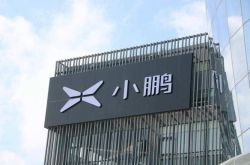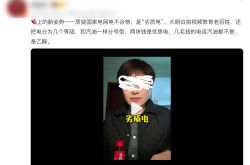Kuaishou Eclipses Baidu in Advertising Revenue, but Can AI Propel Baidu's Market Value?
![]() 08/24 2025
08/24 2025
![]() 588
588

Can AI technology and scenario reconstruction propel Baidu's market value to catch up with that of Kuaishou?
Written by | Lan Dong Business Zhao Weiwei
19.8 billion vs. 16.2 billion—this is the comparison of advertising revenue in the latest quarterly financial reports of Kuaishou and Baidu, respectively.
For the third consecutive quarter, Kuaishou's advertising revenue has surpassed that of Baidu. In the fourth quarter of last year, Kuaishou's advertising revenue hit 20.6 billion, surpassing Baidu's 17.9 billion for the first time. In the first quarter of this year, Kuaishou maintained a 2 billion lead, and in the recently concluded second-quarter financial report, the gap widened to 3.6 billion.
Advertising is the core business for both companies, and coincidentally, their second growth curves also overlap. Kuaishou's live streaming business and Baidu's new AI business both reached a scale of 10 billion in the second quarter.
A firm strategic investment in AI is a common ground for both Kuaishou and Baidu. Kuaishou's prominent video generation model, Keling, contributed over 250 million yuan in revenue in the second quarter, entering the short dramas, advertising, and gaming industries. Meanwhile, Baidu's digital human technology, which it has been developing for years, brought in approximately 500 million yuan in revenue in the same quarter, venturing into education and live streaming e-commerce.
While advertising revenue is declining, AI is growing faster. Baidu's AI layout spans a broader spectrum than Kuaishou's, encompassing Kunlun chips, the upcoming new generation of ERNIE Bot large models, Luobo Kuaipao, and Baidu Intelligent Cloud Services. Essentially, it is benchmarking models, applications, and cloud computing against technology giants like Alibaba and Tencent.
However, the capital market remains unconvinced.
Over the past year, Baidu has been surpassed by Kuaishou and Tencent Music in terms of market value among Chinese internet companies, with its current market value standing at less than 30 billion dollars. To reclaim its spot among the top 10 Chinese internet companies by market value, Kuaishou, with a market value of 40 billion dollars, has emerged as Baidu's biggest competitor.
Both parties are already engaged in homogeneous competition in the fields of digital humans and large video models. For instance, before this year's 618 shopping festival, the digital human Luo Yonghao made an appearance in Baidu's e-commerce live streams, successfully attracting attention with Baidu's "highly persuasive digital human." In August, Luo Yonghao's Jiaopengyou live streaming room fully entered Kuaishou, and Luo Yonghao will also start live streaming with his digital human avatar on Kuaishou, utilizing Kuaishou's own video technology.
Another example lies in video generation models. After Kuaishou's Keling led the industry for a year, Baidu belatedly released the MuseSteamer video generation model and launched the 2.0 version on August 21, supporting the integrated generation of multi-character voice, with prices as low as 70% of similar products in the industry.
AI transforming search engines has resulted in over 50% of Baidu's mobile search result pages containing AI-generated content. AI transforming short videos has made Kuaishou's Keling a one-stop creative engine for creators, facilitating content creation and thereby advancing commercialization. Essentially, both aim to enhance the matching efficiency between humans and information.
Can AI technology and scenario reconstruction propel Baidu's market value to catch up with that of Kuaishou?
Baidu's Obsession with Digital Humans
On Kuaishou, Baidu's digital human family, including Duxiaoxiao, has stopped updating for two years. This was once the most direct collaboration between Baidu and Kuaishou four years ago. "Duxiaoxiao and Her Friends" released a total of 109 works and accumulated 824,000 followers.
"I feel like Baidu's AI got up early but arrived late to the party, and many AI products like Duxiaohu and Xijiajia were wasted one after another," said a user on Duxiaoxiao's Baidu Post Bar. They could no longer find the entrance to use these digital humans and lamented that the users accumulated during the peak of the metaverse concept no longer exist.
Digital humans represented by Duxiaoxiao once symbolized Baidu's obsession with AI, a trend that Baidu recognized early on.
In 2020, before ChatGPT became popular, Baidu introduced the virtual digital human Duxiaoxiao, built on the capabilities of DuerOS and innovating search through a more human-like communication method. Duxiaoxiao possesses visual recognition capabilities, supports the most natural way of communication, and can personalize the search process and results.
In the following three years, Duxiaoxiao joined social media platforms such as Weibo and Kuaishou. Especially with the support of large model capabilities, it also joined Taobao and launched "Xiaoxiao's Everything Store," providing services based on ERNIE Bot APP, such as MBTI personality tests from photos, a WeChat Moments magic tool, and a rainbow fart fairy, priced from 0.01 yuan.
This Taobao store still exists today, but the price of each item has been changed to 9.99 million yuan.
Looking back now, the digital human business has had little success for Baidu in terms of C-end interactive entertainment attempts. There is more commercial growth potential in B-end e-commerce live streaming and brand marketing.
This two-pronged layout of digital humans has become increasingly apparent in the second half of this year: On the one hand, in live streaming e-commerce, Baidu marketed Luo Yonghao's digital human during the 618 shopping festival, which is also what Li Yanhong defined as a "highly persuasive digital human." This project belongs to Baidu's e-commerce business (Baidu Youxuan).
On the other hand, in brand marketing, Baidu Intelligent Cloud is also promoting AI digital employees, essentially promoting the implementation of intelligent agents and AI services on the enterprise side, creating seven landing scenarios such as marketing managers, repayment assistants, and car salespeople.
Ping Xiaoli, general manager of Baidu E-commerce, revealed in July this year that Baidu E-commerce has been profitable, and digital human revenue has grown very quickly since the third quarter of last year. "There has been a noticeable increase in clients from the education, healthcare, and fresh fruit and vegetable sectors. This year, we have expanded to scenarios such as automobiles, doctors, and lawyers."
Baidu's digital human live streaming has indeed attracted attention among e-commerce merchants because the core selling point of digital humans is that they are cheaper than live human streaming, replacing repetitive labor, and are suitable for brand companies and white-label companies with mature live streaming systems.
"Using digital humans to extend live streaming hours can fully cover the costs with gross profit. After comparing many companies, Baidu is the most realistic in the industry," said an education industry digital human practitioner to Lan Dong Business.
The AI capabilities behind digital humans have become a must-have for e-commerce platforms. Whether it's JD.com or Taobao, the concept of omni-channel intelligence has begun to contribute incremental value, becoming an increasingly obvious trend in driving GMV. Baidu's digital humans also face competition in a stable e-commerce platform landscape.
Kuaishou's layout of digital humans is much later than Baidu's. It only started launching the digital human "Nvwa" in April last year. According to data from Kuaishou, digital human live streaming drove an average daily GMV increase of 210% for small and medium-sized merchants and a monthly marketing cost reduction of 72%. In comparison, Baidu's digital humans in e-commerce helped merchants reduce live streaming operating costs by over 80% and increase GMV by an average of 62%.
It can be said that in terms of cost reduction, Baidu has a slight edge, but in terms of efficiency enhancement, with one at 210% and the other at 62%, Kuaishou's digital humans are more significant than Baidu's.
Synchronized with the growth of Baidu's digital human revenue last year, Kuaishou also welcomed a wave of digital human dividends. In the fourth quarter, the daily consumption of AIGC short video marketing materials and virtual digital human live streaming solutions exceeded 30 million yuan, with the peak daily consumption of "Nvwa Digital Human" exceeding 20 million yuan.
Digital humans represent an infrastructure battle in live streaming e-commerce, and the competition in this field is not just about the ability to replicate human performance in live streaming technology. In the future, it will test the intelligent solutions throughout the entire live streaming process, such as how to solve the challenges in core areas like marketing investment, user demand matching, traffic acquisition, and retention. These are all manifestations of digital humans being smarter than real humans.
MuseSteamer Chasing Keling
In August, the AI video creation contest initiated by Baidu's Huixiang platform had a rule that entries must include a topic and be posted on one of the four platforms: Baijiahao, Douyin, Xiaohongshu, and Bilibili, with the exception of Kuaishou.
Similar to Kuaishou's Keling creation contest last year, which was divided into three sub-tracks, Baidu's Huixiang creation contest was also divided into three sub-tracks: realistic narrative, science fiction, and animation. However, the prize money was significantly lower than that of previous Keling and Jimo contests. The highest prize money for Keling was 36,600 yuan at the time, while Jimo later raised the highest prize money to 100,000 yuan. Now, the highest prize money for Baidu's Huixiang is a 3,000 yuan JD.com gift card.
In terms of timing, it is a year later than Kuaishou's Keling creation contest. In terms of funding, the highest prize money is more than 10 times lower. In terms of capabilities, Baidu's video model achieved the integrated generation of multi-character audio videos for the first time.
Fifty days after the release of the 1.0 version, on August 21, Baidu's Huixiang platform upgraded the MuseSteamer video generation model to version 2.0. Baidu's Huixiang platform provides four video generation models: Turbo, Pro, Lite, and the audio version. The creation modes are divided into image-to-video and audio video. Users must upload the first frame image to create a video.
"Prices as low as 70% of the industry average," Baidu's MuseSteamer Turbo audio version is priced at 2.5 yuan per second, with a limited-time discount of 1.4 yuan for 5 seconds. In fact, the ability to monetize AI is the key. In terms of commercialization, Baidu's Huixiang also adopts a C-end charging strategy, where users need to consume recharged virtual items to generate videos.
Similar to Kuaishou's Keling, which uses "inspiration points" to calculate prices, Baidu's Huixiang uses "imagination points," where 1 yuan equals 10 imagination points. Users can obtain imagination points through lotteries and purchasing memberships, which can then be exchanged for AI generation services. This business model is the same as Kuaishou's Keling and ByteDance's Jimo.
Compared to C-end creation, B-end customers are more crucial. The development of Baidu's MuseSteamer large model means that under the pressure of advertising performance, Baidu has to change its previous bias against video generation models.
In the third quarter of last year, Li Yanhong made it clear that Baidu would not pursue video models like Sora. "The investment cycle for video generation like Sora is too long, and business benefits may not be realized in 10 or even 20 years. Therefore, no matter how popular it is, Baidu will not do it." However, under the competition between Kuaishou's Keling and ByteDance's Jimo, this immature market has already shown potential.
A Morgan Stanley report stated that 70% of Keling's existing customers come from overseas. Kuaishou's financial report for the second quarter of this year showed that Keling's AI revenue exceeded 250 million yuan, and the latest announced user base of Keling exceeded 45 million, meaning that its user base nearly doubled in just three months after the release of the Keling 2.0 version.
Kuaishou's Keling has become the main theme in Kuaishou's AI narrative, while ByteDance's Jimo has also been continuously supporting professional AI creators this year, outputting works to the Shanghai International Film Festival, Cannes International Film Festival, Busan International Film Festival, etc., thereby gaining recognition in the film and television industry.
In the view of industry practitioners, Keling and Jimo, backed by Kuaishou and Douyin, have the natural advantage of a closed loop for content "creation-distribution" and richer data resources for video model training.
For Baidu, the dominant force behind its MuseSteamer video generation model is Baidu's commercial R&D team, which is the most obvious difference from Kuaishou's Keling, which is led by the technical team. It also means that Baidu focuses more on the advertising content market for video generation models.
"The development of Baidu's MuseSteamer is a new paradigm of application-driven model development," Baidu emphasized when releasing MuseSteamer 2.0, distinguishing it from models driven by technology in the industry. During the launch, it demonstrated marketing cooperation videos with FAW-Volkswagen and Yili, meeting the demand of Baidu's advertising customers for video marketing.
The advertising business is the core support of Baidu's current performance. In the second quarter of this year, Baidu's core online marketing revenue was 16.2 billion yuan, a sharp decrease of 15% year-on-year, marking the most severe quarterly revenue decline in nearly three years. The online marketing business has become the key factor dragging down overall revenue, which also means that AI transformations, including Baidu's MuseSteamer, must face the challenge of short-term monetization capabilities.
Led by Kuaishou's Keling, Baidu's MuseSteamer large model faces an uphill battle in capturing market share amidst fierce competition. Nonetheless, it has successfully reimagined an AI scenario for Baidu's commercialization system, potentially reviving the company's advertising revenue, which has seen frequent declines.





